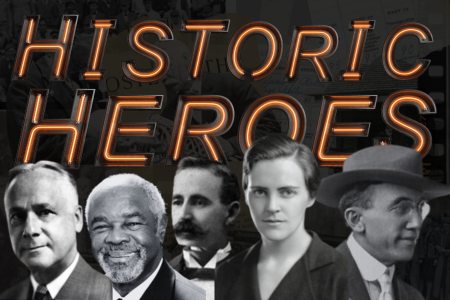The NBOME Historical Heroes
A look at some of the individuals who shaped the NBOME into what it is today
At its formation in 1934, the NBOME (then called the National Board of Examiners for Osteopathic Physicians and Surgeons, or NBEOPS) sought to create a national competency examination with high standards that was acceptable to all jurisdictions and that assessed competencies and content important to and accepted by the osteopathic medical profession.
Since then, the NBOME has been working tirelessly to ensure patient safety through fair, valid, and rigorous assessments by which osteopathic physicians must meet a national standard of knowledge and skill. Here, we highlight just a few of the people who helped shape the NBOME into what it is today. Please check back as we continue to add more important people to this list throughout the year.
MEET SOME OF THE NBOME FOUNDERS
Prior to the NBEOPS formation, medical licensure varied widely; each state had its own medical practice acts and individual examinations.
The three founders of the NBEOPS—Charles Hazzard, DO, Arthur G. Hildreth, DO, and Asa Willard, DO—recognized the critical need for a profession to self-regulate, to assure practice rights for DOs based on osteopathic competencies, and to assure patient trust in this growing distinct profession within health care in the United States.
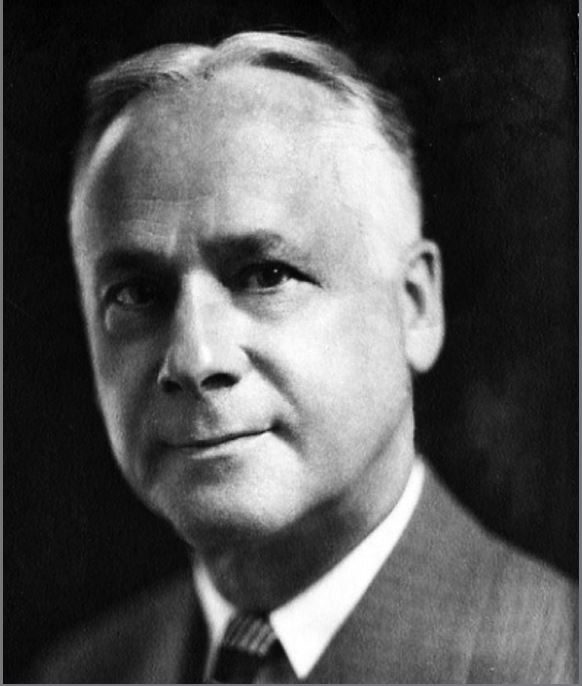

Charles Hazzard, DO
Hazzard served as the NBEOPS’ first president and would go on to serve on the New York State Board of Medical Examiners. He also authored the widely used texts, The Principles of Osteopathy and The Practice of Osteopathy and was treasurer of the AT Still Research Institute for many years.
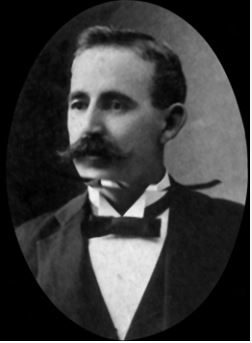
Arthur G. Hildreth, DO
Hildreth was also a staunch advocate for professional self-regulation and independent licensure for DOs, based on examinations designed for DOs and osteopathic medical practice.

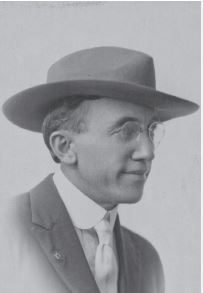

Asa Willard, DO
Willard was the first secretary-treasurer of the NBEOPS and was a tireless promoter of full rights for osteopathic physicians. He was also a prolific author, publishing several regular columns in The Journal of the American Osteopathic Association (now the Journal of Osteopathic Medicine).
These three men fought the discriminatory practices that limited DOs from practicing and the profession from growing, ensuring professional self-regulation, and ultimately, garnering trust among other physicians, patients and other stakeholders over the ensuing 90 years.
MEET WILLIAM G. ANDERSON, DO

William G. Anderson, DO was a prolific figure in the Civil Rights Movement, advocating alongside the likes of Martin Luther King, Jr. and Ralph Abernathy.
He has also been a driving force in the osteopathic profession, and the NBOME. Anderson served on the Board of Directors from 2003-2014 and received the Santucci Award, the highest honor the NBOME bestows, in 2016.

What follows is an excerpt about Anderson from In The Public Trust: The History of NBOME 1934-2009, published in honor of the NBOME’s 75th anniversary:
Dr. Anderson is best-known for his civil rights work and as the first African-American president of the AOA, 1994-95. He was born in Americus, Georgia in 1927, and attended the Des Moines College of Osteopathic Medicine. He served as associate dean of the Kirksville College of Osteopathic Medicine and a clinical professor of osteopathic surgery at Michigan State University’s College of Osteopathic Medicine, yet when he returned to Albany, Georgia, in 1957, he was prevented from treating patients because of segregationist policies. He responded by becoming the founder and first president of the Albany Movement, which worked to register African-American voters and devised ways to end racial segregation, getting the attention of Dr. Martin Luther King, Jr. Dr. Anderson is a member of Physicians for Social Responsibility. He writes:
“As one of the newest members of the National Board of Osteopathic Medical Examiners, I am constantly challenged and rewarded as I learn more and more about how this outstanding organization works. I am proud to be a part of a process that assures the public that only the well-qualified physicians will be recommended for licensure.
“The long hours and days of deliberation on how to make the examinations credible and valid are rewarded by producing examinations that can withstand the most critical scrutiny and analysis and meet the objectives and mission of the NBOME.
“The very competent staff of the NBOME makes it the finest testing organization in the country. Working with them is a pleasure, and their efforts to continually improve serve as a stimulus and challenge to me as well as the other board members.”
Six of Dr. Anderson’s children and grandchildren have become DOs.
MEET MARGARET BARNES, DO
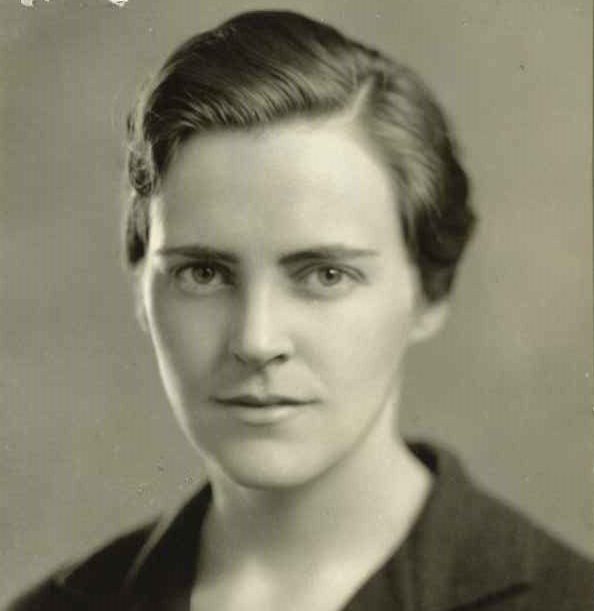

At just 28 years old, Margaret Barnes, DO, was the first person to take—and pass—the National Board of Examiners for Osteopathic Physicians and Surgeons’ (now the NBOME) exam. She received high marks on the exam.
Barnes and others who passed the exam were awarded a Diplomate of the National Board, a mark of prestige and professional proficiency. By passing the exam, Barnes was the first to demonstrate at a national level competency in areas most important to and accepted by the osteopathic profession.
Barnes would go on to serve for several years as the editor of the yearbook of selected osteopathic papers for the Academy of Applied Osteopathy (now the American Academy of Osteopathy, or AAO). Her home served as the AAO main office in California during the 1950s and 1960s. In 1951, she received the Distinguished Award in Pediatrics from the American College of Osteopathic Pediatricians.
Barnes later wrote the first history of the AAO, titled, “History of the Academy of Applied Osteopathy” and “A Fortieth Anniversary Memoir.” These were published in the American Osteopathic Association’s The DO in 1972 and 1978, respectively.
MEET JANICE A. KNEBL, DO, MBA
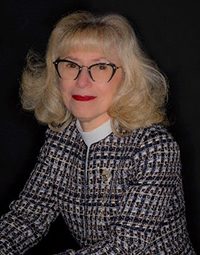
Janice A. Knebl, DO, MBA, began her service to the NBOME as an item writer in the late 1980s, becoming a Level 2 Test Review Committee participant and chair
during the 1990s.
She was appointed to the NBOME Board of Directors in 1999, elected to the Executive Committee in 2003, and served two terms as Board Secretary-Treasurer from 2005-2009 during which she drove the development of enhanced policies and procedures for the Finance Committee. From 2011 to 2013, she served as NBOME Board Chair.

Knebl oversaw the creation of and chaired the Blue Ribbon Panel, which was established to perform a comprehensive review and strategic plan for the future of COMLEX-USA. The panel evaluated a plan to implement a two-decision point, competency-based COMLEX-USA, and to address opportunities to continue to enhance the licensing exam program. The conclusions and framework developed by the Blue Ribbon Panel were implemented in the COMLEX-USA Master Blueprint in 2018—still used today—and helped usher COMLEX-USA into its current form.
In 2015, Knebl received the Santucci Award, the NBOME’s highest honor awarded in recognition of her outstanding contributions to the NBOME and the advancement of the NBOME mission to protect the public. Knebl is a respected leader in treatment, research, and education related to Alzheimer’s and dementia and has also served as chair of the AOA Commission on Osteopathic Colleges Accreditation (COCA). She was named the 2020 American Osteopathic Foundation Physician of the Year in recognition of a career dedicated to improving the lives of patients, students, and caregivers.
MEET EUGENE A. OLIVERI, DO
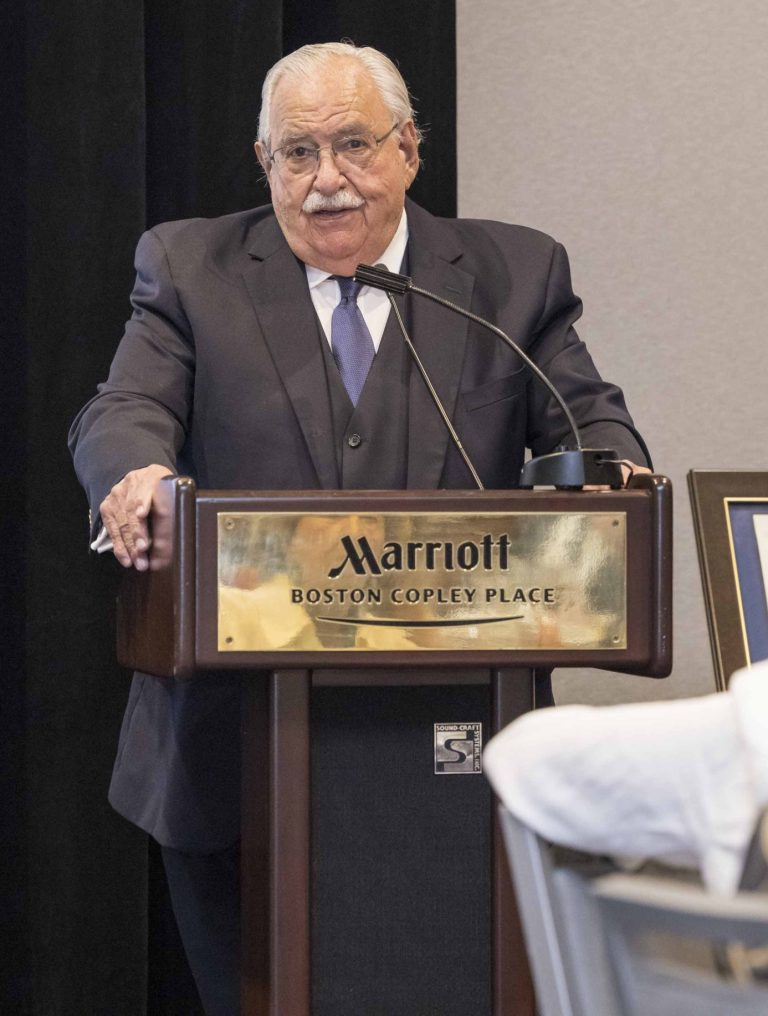

Eugene A. Oliveri, DO, has been a strong advocate for COMLEX-USA and the NBOME for decades. Oliveri served on the NBOME Board from 2000-2009, and held leadership roles on the Membership/Nominating, Product, and Executive committees for the organization.
In April 2000 Oliveri, then president of the AOA, was invited to give the annual Galusha Memorial Lecture to the Federation of State Medical Boards (FSMB) House of Delegates—the first time that a DO had been asked to do so. In his address, Oliveri described the importance of osteopathically distinctive licensure assessment and COMLEX-USA in protecting the public. His work helped contribute to a resolution passed by the FSMB House of Delegates recognizing COMLEX-USA as the valid licensing examination for DOs.
He also advocated for Louisiana’s acceptance of COMLEX-USA, the last state to do so, in 2005. Oliveri gave the A.T. Still Memorial Lecture at the AOA’s House of Delegates in 2009, focusing the address on the NBOME 75th anniversary and the importance of the organization’s osteopathically distinctive assessments as “the weaving tapestry that connects the profession together.”
Oliveri was awarded the NBOME Santucci Award, the NBOME’s highest honor, in 2022 for his dedication to the NBOME and his work to advance the acceptance of COMLEX-USA.
MEET JOHN E. THORNBURG, DO, PHD
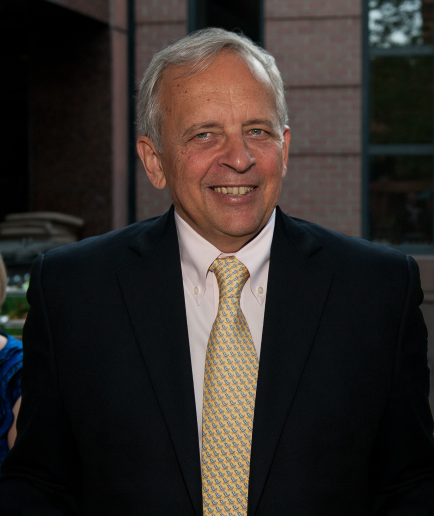
John E. Thornburg, DO, PhD, joined the NBOME in 1982 as an item writer in pharmacology. He went on to serve as the National Faculty Chair for Biomedical Sciences, as the chair of the NBOME Pharmacology Test Construction Committee in the 1980s and 1990s, and as COMLEX-USA Level 1 coordinator and exam form reviewer. In the latter role, he traveled to Chicago numerous times a year for over 20 years to serve as final exam reviewers for COMLEX-USA.
Thornburg took a break from test development activities to serve on the NBOME Board, first as vice-chair and then as chair from 2009 to 2011. In 2014, he received the Santucci Award, the NBOME’s highest honor, for his exemplary leadership in support of the NBOME mission.

After completing his service on the Board, Thornburg returned to test development activities, leading the Level 1 Exam and Advisory Committee as Level 1 Chair from 2016 to 2019—a truly remarkable tenure of leadership and work.
In 2019, the NBOME created the John E. Thornburg National Faculty Leadership Award in recognition of his significant contributions to the NBOME and the profession. He has mentored countless National Faculty and Board members, and many credit Thornburg as the reason they got involved with the NBOME. This award is bestowed to National Faculty leadership who have distinguished themselves by their longstanding contributions to examination development, committee work, or related activities. Thornburg received the inaugural award at the June 2022 midyear Board meeting.
Thornburg is professor emeritus of pharmacology and toxicology at Michigan State University (MSU). He has served that institution for nearly 45 years in numerous educational, clinical, and leadership roles. He has authored 57 publications and given 61 lectures on various topics related to pharmacology. In 2012, the American Osteopathic Association awarded him the Distinguished Service Certificate for his dedication to the profession, and MSU-College of Osteopathic Medicine honored him for distinguished teaching.
MEET W. CURTIS BRIGHAM, DO, AND SAMUEL V. ROBUCK, DO
In addition to the NBOME’s more well-known co-founders Charles Hazzard, DO, Arthur G. Hildreth, DO, and Asa Willard, DO, several other physicians joined them in the vision of creating a national board that would fulfill a critical need for the profession to self-regulate, to assure practice rights for DOs based on osteopathic competencies, and to assure patient trust in this growing distinct profession within health care in the United States.
There were in fact 15 members of the inaugural board of the National Board of Examiners for Osteopathic Physicians and Surgeons (NBEOPS), all of whom were appointed by the American Osteopathic Association and were each established leaders in the profession.
Here, we highlight two of those members: W. Curtis Brigham, DO, a Los Angeles surgeon who served as the NBEOPS’ first vice-president; and Samuel V. Robuck, DO, who served as the NBEOPS president from 1948 to 1963. Excerpts taken from In the Public Trust: The History of NBOME 1934 – 2009.
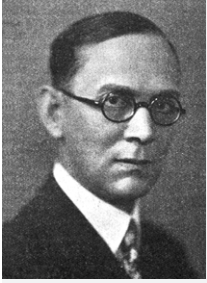

W. CURTIS BRIGHAM, DO
A native of Moscow, Idaho, Brigham was very much an organization man after he moved to Los Angeles. A fellow and founder of the American College of Osteopathic Surgeons and a founder of Monte Sano Hospital, he was also a trustee of the AOA.
Brigham served as chief of staff at Monte Sano for more than 20 years while writing extensively on surgical techniques. He also taught surgery, both in Los Angeles and Denver.
He and his wife, Eleanor G. Brigham, DO, often made the society news of the Los Angeles Times, particularly for their work with Revolutionary War genealogy. Their two children, Fleda Brigham and Crichton Brigham, were both DOs.
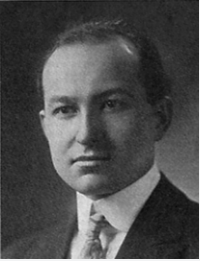
SAMUEL V. ROBUCK, DO
Born in Sterling, Colo., Robuck studied finance and accounting at Denver University before beginning his medical career. He was the first president of the American Osteopathic Foundation when it was formed in 1929 and was a founding member of the American College of Osteopathic Internists.
He served on the faculty of Chicago College of Osteopathic Medicine and on the staff of Chicago Osteopathic Hospital for more than forty years.

He also received a Physician Emeritus award from Sigma Sigma Phi, the national osteopathic medicine honors fraternity. In 1946, he and TT Spence, DO, then the president of the NBEOPS, appealed to the AOA Board to give NBEOPS more control over its membership selection, allowing educators and members of DO licensing boards to participate.
MEET SHERYL A. BUSHMAN, DO
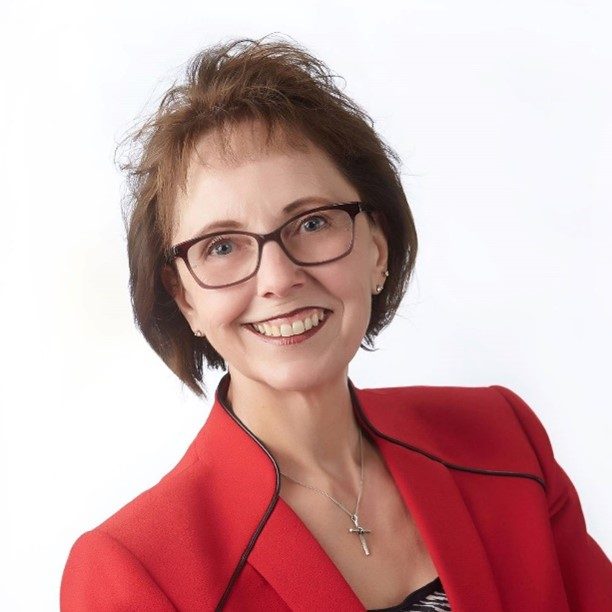

Sheryl A. Bushman, DO, was a trailblazer for the NBOME, serving as the first woman chair of the Board of Directors from 2005 to 2007. The NBOME has had four women at the helm of its Board during its history. For our 85th anniversary, we interviewed Bushman to gather her perspective on being a female leader in the organization. “The NBOME has always treated women with the utmost respect,” she said in that interview. “It is part of our DNA. I recall before becoming Chair they asked “What should we call you? Chair-man Bushman doesn’t sound appropriate.” We’ve simply called the position ‘Chair’ ever since.”
Bushman championed clinical skills testing; she was a critical part of the launch of COMLEX-USA Level 2-PE and helped cut the ribbon at the opening of the Philadelphia National Center of Clinical Skills Testing in 2004. She was a member of the Clinical Skills Testing Advisory Committee (CSTAC), the CSTAC Subcommittee for SOAP Note Misrepresentation, and the Level 2-PE Advisory Committee. In addition, she served as Chair for the Standards and Assurances and COMAT Ob/Gyn committees. She remains active in the National Faculty to this day, assisting in item writing and review.
In 2012, Bushman was awarded the NBOME Santucci Award for her leadership, presented by the second woman to serve as Chair, Janice A. Knebl, DO, MBA. Bushman has over 35 years of experience in Ob/Gyn and has split her career between medical practice and administration, serving as a physician, professor, residency program director, among other roles. She is a pioneer in healthcare technology, developing the role of what is now commonly known as the Chief Medical Information Officer (CMIO) and is currently the senior vice president of physician advisory at Continuum Health IT, a health information technology consulting firm in Florida.
MEET LINJUN SHEN, PHD, MPH
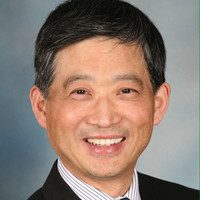
Linjun Shen, PhD, MPH, was a pivotal figure at the NBOME. He joined the organization as a graduate student in 1990 and while initially involved in psychometrics, Shen’s role at the NBOME evolved to include program development and management of testing.

Shen’s contributions were crucial in defending the credibility of the COMLEX-USA examinations, particularly regarding their validity. His work was instrumental in countering criticisms and reinforcing the NBOME’s standing within the medical community. Former NBOME Board member George Thomas, DO, noted that Shen “blunted the attack” from the FSMB/NBME on the credibility and validity of COMLEX-USA, and “fortified the NBOME in the eyes of the medical community.”
Shen believed that osteopathic licensing programs had the capability to break new ground in the field of licensure and certification. In fact, he played a key role in leading the transition of COMLEX-USA examinations to a computer-based testing (CBT) format in 2005. Shen was a skilled problem-solver; he devised a solution for maintaining test integrity through multiple, unique test forms—a challenge that had no precedent in the literature. Four years after the launch of CBT, national testing experts reviewing the psychometric quality of COMLEX-USA, giving the examination series high marks and considering it one of the most innovative systems in the nation at the time.
For his innovation and exceptional contributions to the COMLEX-USA program, Shen received the Santucci Award in 2012.
MEET SHIRLEY BODETT
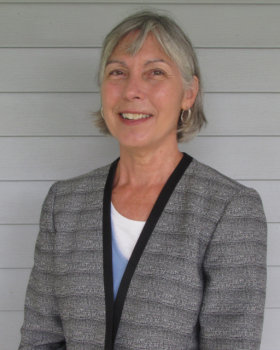
Shirley Bodett, senior operations specialist, has been a constant at the NBOME for—as of this month—40 years. What was initially supposed to be a temporary job as an office manager became a decades-long career in assessment. Bodett reflects on the progression of the NBOME in this expert from In The Public Trust: The History of the NBOME, published during its 75th anniversary:

“When [Bodett] first started, the NBOME was housed in a three-room one-story office building with no air-conditioning. On warm days, staff opened the windows and had to make sure papers didn’t fly too far. They had no computers, only two giant word processors. Test items were kept on file cards and word processor floppy disks—about fifty items to a disk. Ms. Bodett joined a two-person staff; soon afterward, two more administrative assistants were hired. An annual item writing-and-review meeting was held for small groups of physicians to review new items in each discipline. Those items were transferred to file cards, which were stored and used to compile exams. In addition to the multiple-choice Part III examination, interns also had to do ‘live patient evaluations.’
“In 1987, a new president, Dr. Thomas Santucci, made substantial changes to the exam development process and the structure of the board. From that point on, changes have progressed at lightning speed, to the point where the NBOME now is fully in the computer age and employs many times over the number of employees it once did in its production of high-quality, reliable testing instruments that have been lauded by testing experts.”
In 2014, during the NBOME’s 80th year, Bodett received the Santucci Award, the highest award bestowed by the NBOME. Then a senior testing consultant, she was honored for her critical contributions to the NBOME, including her commitment to quality, consistency, and accuracy of test development publications and examinations, and mentorship of numerous item writers and National Faculty members to ensure best practices in item and test development.
MEET SANTUCCI & CLARK
As our 90th year nears a close, we are highlighting two figures so integral to the development of the NBOME, they have awards named after them: Thomas F. Santucci, Jr., DO, and Gary R. Clark.
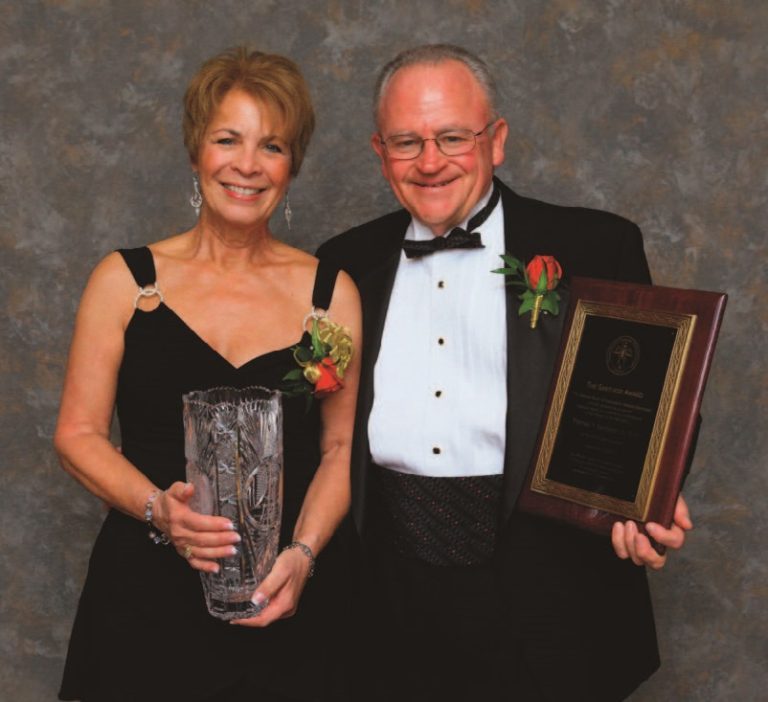

Thomas F. Santucci, Jr., DO, was president and chair of the NBOME Board from 1985-1987. During this time, he led the organization through many positive developments, such as the enhancement of psychometric rigor and reliability of its assessments and changing the discipline-based examination to a more clinically based one.
He revamped the test development process and stressed the importance of correct test item writing formats, accuracy of graphic images, and clarity of language. Additionally, Santucci is credited with the expansion and recruitment of a volunteer base of subject matter experts now known as the NBOME National Faculty.
Santucci also updated the structure of the Board during his tenure and helped changes progress at a faster pace than ever before. To recognize Santucci for his contributions and for ushering the NBOME into a new era, the NBOME created the Santucci Award in 2009. This award is given to a member of the NBOME Board, staff, or committee who has made outstanding contributions to the mission of the NBOME and has served the organization for a minimum of ten year. As its namesake, Santucci received the first award in 2009.
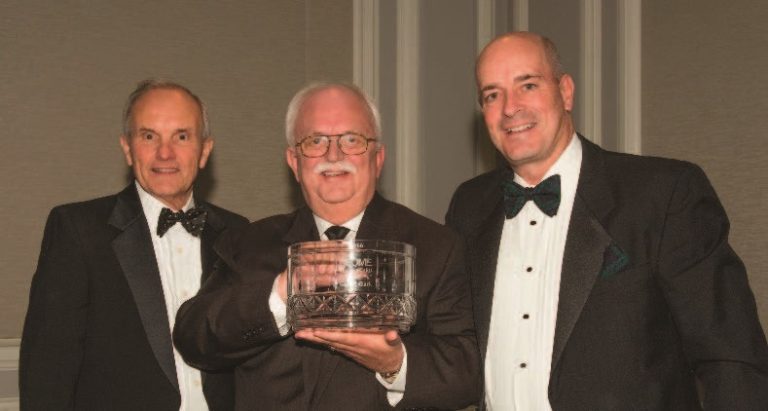
Gary R. Clark was a leader in physician licensure and professional regulation at the state and national levels. He served as the executive director for state medical boards in Oklahoma and Missouri for over 30 years. In 2007, Clark was elected as the second public member of the Board of Directors. He served on the Board and Executive Committee through 2015.

In addition, Clark served multiple terms on the Board of Directors of the Federation of State Medical Boards and was a member of the Board of Directors and president of the Council of State Governments’ Clearinghouse on Licensure, Enforcement, and Regulation. He was a founding member and past president of Administrators in Medicine and was a volunteer executive director for the American Association of Osteopathic Examiners (now the American Society of Osteopathic Medical Regulators).
Clark was lauded as a tireless advocate for the osteopathic medical profession and the idea that patients are best served by care from osteopathic physicians who have qualified for licensure by successful completion of a valid, osteopathically distinctive licensure examination program. His focus on patient advocacy and embodiment of the NBOME mission led the organization to create the Clark Award for Patient Advocacy in 2016, awarded to individuals who have demonstrated an outstanding commitment to patient safety, patient protection, and quality of care. Clark received the inaugural award in 2016.

